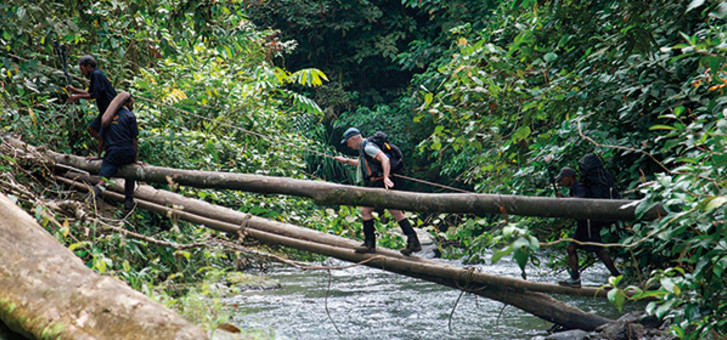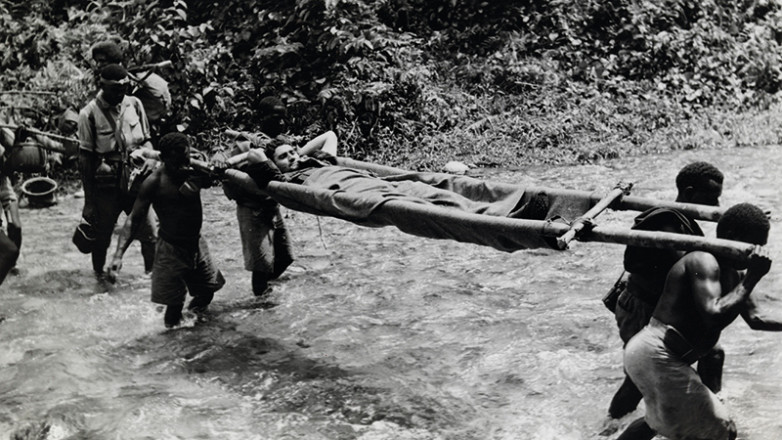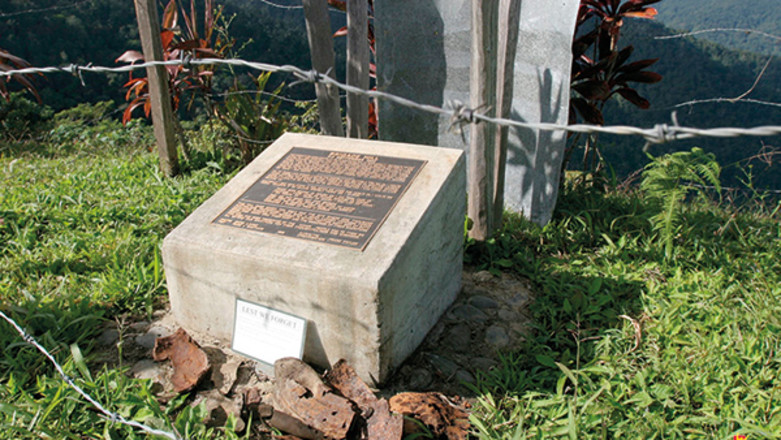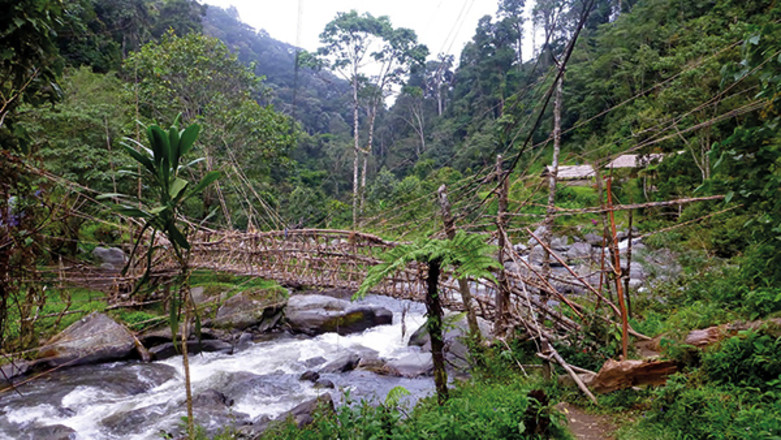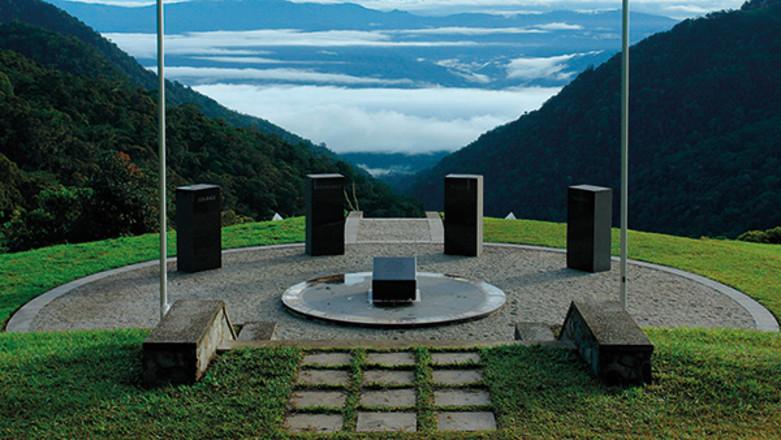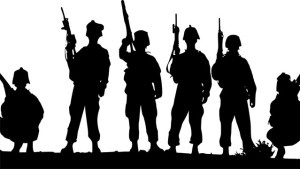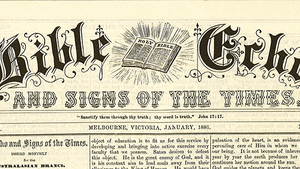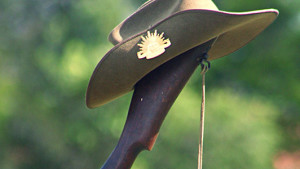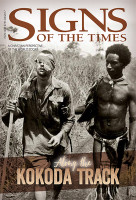The Koiari people of the Kokoda area of south-west Papua, were observed by an early explorer of PNG, Alexander Morton, to be particularly warlike. So when Seventh-day Adventist missionaries established the Bisiatabu mission station, near Sogeri, in 1908, they certainly weren’t interested in its message of peace! The Adventists laboured a year without a single convert. This record was repeated until, finally, in the sixth year, a teenage boy made a commitment to Christianity. But the boy’s father then pulled him out of the mission, ending his association with the church.
In 1924, pioneer Seventh-day Adventist missionary William Lock, working out of Bisiatabu, converted 11 young people. Then with Adventist missionaries moving into many new areas, the Lock family moved inland along the Kokoda Track to the village of Efogi. There they set up a clinic and mission school. But right along the Kokoda Track the Adventist message of commandment-keeping, clean living, temperance and peace were preached.
But in 1942 the Kokoda name was suddenly elevated to a household name, as news emerged of the Australian defence of Port Moresby and with it the homeland’s northern shores. It suddenly went from being an obscure walking trail in a forgotten part of the world, to the centre point of one of the greatest dramas in Australian history as the forces of the Imperial Japanese Army and the Anzacs fought for victory.
But unlike most battles of the war, the lasting symbolism of the Kokoda campaign is not that of a fighter, a general or a weapon. Rather, it is the Papuans themselves, who displayed a remarkable kindness and selflessness, assisting wounded Allied soldiers through the mud to safety.
So impressed were Australians by the Papuans, they affectionately referred to them as the Kokoda “angels,” or “fuzzy-wuzzy angels,” a sentiment Australian combat engineer, Bert Buros, captured in a poem he penned: “Many a lad will see his mother and husbands see their wives/Just because the fuzzy wuzzy carried them to save their lives.”
A report by Robin Sydney McKary, an Australian commando in the region, said this:
You had your loyal . . . and your disloyal [Papuans]. . . . Without being in any way sectarian, we found that the Seventh-day Adventists were by far outstanding in loyalty. I know of not one Seventh-day Adventist adherent who was any way disloyal. I don’t know what it is, but it just worked out that way. . . . The other religions could be one way or the other, but the Seventh-day Adventists for some reason were particularly loyal and . . . well, they always were a cleaner people, they taught them cleanliness and respect and loyalty and cheerfulness. And, you know, I’ve got no beef for the Seventh-day Adventists . . . [but] if you had to rely on a [Papuan] without knowing him, or knowing the circumstances, you know, the fact that he was a Seventh-day Adventist would swing you.”
Another Australian soldier at the time put it this way, recorded in the Australian Women’s Weekly:
Believe me, when this war is over and its history written, there is one chap that should get a large share of the praise. He is the [Papuan]. . . . He sometimes arrives with bleeding shoulders, puts the wounded gently down, shakes himself, grins and off he goes for another trip.
Another, Captain John McCarthy, agreed: “These [men], so gentle and compassionate with men in pain . . . hold a justly honoured place in the esteem of every Australian.”
And speaking at the 50th anniversary of the Kokoda campaign, former Australian prime minister Paul Keating stated: “above all, we should honour and express our profound admiration for the Papua New Guinean carriers whose stalwart support was crucial to the final victory. The support they gave to Australian soldiers, the terrible conditions and dangers they endured with the soldiers, the illness, injury and death many of them suffered, constitutes one of the great human gestures of the War—maybe the great humane gesture of our history.”
In recent years, academics have striven to demythologise the Papuans who saved Australian and New Zealand wounded soldiers. They point out that many were coerced by the Australian military into service. While this provides texture and context for the story, it nevertheless fails to explain why people who, if so mistreated, were so kind in return. After all, the early accounts of the people were of a warlike, blood-thirsty culture. What changed?
For that, you have to go back to 1908, when the first Adventist missionaries arrived in the country and worked on changing the hearts of the so-called heathen. By the time World War II exploded, writes historian Alan Smith, “every village along the Kokoda Trail had come under some measure of Adventist mission influence, with baptised members in most villages. . . . The Koiaris had become so transformed that when the Japanese penetrated the area in their advance toward Port Moresby, the Koiaris decided to remain loyal to their missionary friends.” This view is confirmed by Steven Barna, whose grandfather was one of the Kokoda angels. “It was because of [Christianity]; it was love that drove the hearts of the people to help.”
In this time of great trial, the change that Christianity had made in the people’s lives came through.

